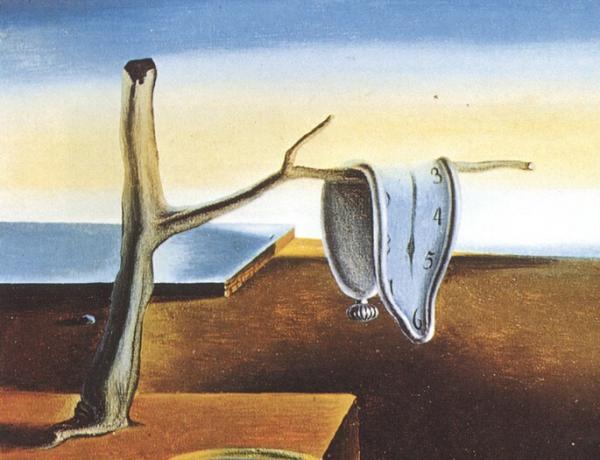the persistence of memory is a 1931 work painted by the surrealist Salvador Dali.
The work, which can be seen at the Museum of Modern Art in New York (MoMA), has dimensions of 24 x 33 cm and was produced using the oil on canvas technique.
This is one of the most representative paintings by the Catalan artist. The composition brings absurd elements in an oneiric setting, that is, one that we are transported when we are dreaming. This feature is quite striking within the surrealism.
The work creation process
The history of art has some works that have become icons, both of artistic movements and of their authors. No doubt this is the case for The persistence of memory.
According to the author himself, the canvas was conceived in a moment of indisposition, when, by refusing to take a walk with his wife, the artist stays at his house painting.

So, in a short period of time, Dalí created what would be one of his most prestigious canvases. He also stated that he was inspired by the image of cheese
camembert melted foods that he had eaten a few hours before.However, it is important to emphasize that, for the surrealists, the creation process was totally related to the psychic world, from which they drew as much inspiration as possible, based on the automatism and images of the unconscious.
Complement your studies, read also: Surrealism.
The hidden meanings in the persistence of memory
This is a composition of relatively small dimensions. However, the scene that was generated is so intriguing that it continues to whet the public's curiosity and arouse interest in the possible interpretations that the represented objects have.
the clocks melting
Dalí's drained watches became a trademark of the painter. And no wonder, because, in fact, these elements had an impact on the public's psyche, due to their intriguing character.

With this image, the artist sought to "materialize" the notion that time passes without our being able to control it, flowing like "melted cheese".
Here, one of the inspirations was Einstein's Theory of Relativity, which suggests that time is related to the law of gravity.
There is also the idea that soft watches symbolize flaccidity and sexual impotence, issues addressed by Dalí in other works.
In this area of the screen, a dry tree is also displayed. The trunk is an olive tree, very present in the region of Catalonia, where the artist was born.
The artist's shapeless self-portrait
The blurred figure that appears in the center of the screen is a kind of misshapen face. This element is interpreted as a representation of the artist himself, who has a soft watch resting on him.

We can see in this prostrate face, huge eyelashes, eyebrows and a nose. Below the nose we see an element that could be a tongue.
The artist is portrayed sleeping in the scene, which makes the dreamlike atmosphere even more evident, where the unconscious commands the situation.
It is interesting to note that, at that time, Sigmund Freud's psychoanalytic theories were under development. In them, the unconscious is extensively studied and the surrealists based themselves on these studies as methods of creation.
insects on watches
the insects in the persistence of memory arise as symbols of subjective concepts. In the case of ants that huddle on the only rigid clock, they bring the idea of decay. The artist suggests that time is devoured by ants.

On the other hand, the fly resting on another object carries as symbolism the subjective passage of that same time, in a allusion that the hours, days and years pass differently, depending on the perspective that observes.
Salvador Dalí: the icon of surrealism
When talking about surrealism, it is essential to cite Salvador Dali. This is because, the eccentric artist, born in the region of Catalonia, Spain, was one of the personalities who most immersed himself in this aspect of art.

Dalí came into the world on May 11, 1904. The son of a family that encouraged him artistically, he studied arts in Madrid, but later moved to the US, where he spent many years.
He followed the surrealist side, transforming himself into an icon of movement, in which he sought to transport unconscious mental images to the screen.
Salvador Dalí's production has numerous canvases, however it also has installations and objects. Furthermore, the artist himself appeared to be a "walking work of art" as he liked to shock people with his unique temperament.
Salvador Dalí died on January 23, 1989 at his birthplace, the city of Figueres, Spain, at the age of 84 years.
You may also be interested:
- Works by Salvador Dalí that will impress you
- world famous paintings



